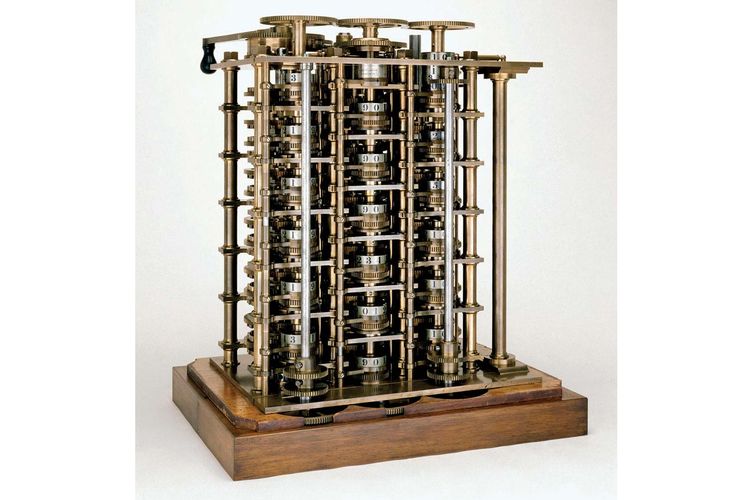Who is Charles Babbage and where is his brain
Have you ever thought what it would be like if in modern life there was no device called a ” computer “? Yes, at this time we have depended a lot on computers so that our work can be more efficient.
The computer itself was actually designed hundreds of years ago. Many influential figures on the development of computers, such as Alan Turing, Konrad Zuse, Henry Edward Roberts, Charles Babbage, and many more.
Of the many names, Charles Babbage is arguably the figure who most contributed to the presence of computers.
History of Computers and Its Development from Time to Time
Because in 1822 ago, he created a machine that can perform arithmetic calculations. This method then became the basis of the development of computers that we know today.
With this discovery, it is not surprising that many people regard this man who was born on December 26, 1791, as the “Father of the Computer”.
However, who would have thought, long before Babbage initiated a computing device, he was sickly and had to study from home.
Suffering from a Deadly Disease

In the 1800s, when Babbage was eight years old, he developed a terrible fever. In fact, the mysterious disease reportedly almost took his life.
Because he was dangerous and his immune system was weak, Babbage’s activities were limited, so he had to be willing to study from home.
He actually studied at the King Edward VI grammar school in South Devon, England in the 1808s. However, health factors forced him to withdraw from school and he had to return to private study.
Over time, Babbage was finally able to go to school normally in a classroom environment through the Holmwood academy, Middlesex, England. At this school, his love for mathematics began to grow.
Love math, but…

Because he liked it, he studied all the mathematical theories in the school library.
His interest in mathematics led him to enter the Trinity campus under the umbrella of Cambridge University in 1810, and the Peterhouse campus in 1812.
Here, he became the best mathematics student and graduated in 1814.
However, he allegedly did not really enjoy his college days. Because there are a number of reports claiming that Babbage was bored with the mathematical theory studied at his campus.
He has learned all the theories he has taught himself through the books he read from his old school library.
Perhaps triggered by boredom, Babbage then formed a mathematical group called the Analytical Society in 1812 which aimed to delve deeper into mathematical problems.
The reason is, at that time mathematics was considered to be able to solve many problems in various industrial sectors, such as navigation, science, to engineering.
Solving problems using mathematical methods and calculation tables is still considered to be time-consuming and a lot of money because there will be many calculations that are possible.
Make a Computer Machine

Because it was considered inefficient, Babbage began to design a tool that could solve mathematical problems using machines in 1819.
Three years later, the device was completed and named ” Difference Engine 0″ and is billed as the world’s first computer.
If you look at the picture above, the shape of the machine is actually very much different from today’s computers.
However, the working principle of the machine is the same as that of a modern computer, which is to perform numerical calculations, aka computation.
Difference Engine 0 is said to weigh up to tens of thousands of kilograms with a height of more than two meters.
This machine itself is operated using a crank handle that can be turned manually to solve mathematical problems.
In 1823, the British government became interested in how this machine worked and invested £1700 in funds so that the next version could be developed.
Never give up
About ten years later, an engine called “Difference Engine 1” which is more capable than Difference Engine 0 was successfully built with a fund of 17,000 Pounds Sterling.
However, the tool is not yet fully operational and still needs further development.
A year later, the Difference Engine 1 project was no longer funded by the government and was stopped due to a supposed lack of funds.
However, this did not stop Babbage from giving up and stopping to develop his computer design.
Around 1837, he designed a system called the Analytical Engine that could calculate much more complex mathematical problems and could be used for various purposes.
Then in 1846, he updated the design of the Difference Engine 1 to become the Difference Engine 2 which became the world’s first mechanical computer.
Unfortunately, the Analytical Engine and Difference Engine 2 did not materialize in a real product until Babbage died.
His brain organs are on display at the museum

Babbage died on October 18, 1871, due to an illness. While still alive, he decided to donate his brain to science purposes when he died.
Today, half of Babbage’s brain is enshrined in the Hunterian Museum at the Royal College of Surgeons, London.
While the other half is on display at the Science Museum, London together with the Difference Engine computer designed by Babbage.
Many people may not know Babbage. However, his ideas about the working principle of computers deserve to be appreciated as an important moment in human history.
Because, thanks to his invention, he managed to change the way people work in modern times who now seem to be increasingly dependent on computers.